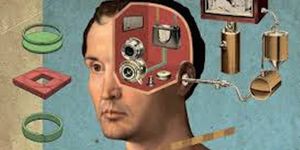What to do when a patient needs a blood transfusion but you don't have their blood type in the blood bank? It's a problem scientists have been trying to solve for years but haven't been able to find an economic solution-until now.
University of British Columbia chemists and scientists in the Centre for Blood Research have created an enzyme that could potentially solve the problem. The enzyme works by snipping off the sugars, also known as antigens, found in Type A and Type B blood, making it more like Type O. Type O blood is known as the universal donor and can be given to patients of all blood types.

"We produced a mutant enzyme that is very efficient at cutting off the sugars in A and B blood, and is much more proficient at removing the subtypes of the A-antigen that the parent enzyme struggles with," says David Kwan, lead author of the study and a postdoctoral fellow in the Department of Chemistry.
The defining difference between A, B, and O blood types is the presence of slightly different sugar structures on the outside of the red blood cells of each type. Type A and B blood cells each have a single additional sugar attached to their surface.
To create this high-powered enzyme capable of snipping off sugars, researchers used a new technology called directed evolution that involves inserting mutations into the gene that codes for the enzyme, and selecting mutants that are more effective at cutting the antigens. In just five generations, the enzyme became 170 times more effective.
With this enzyme, UBC associate professor Jayachandran Kizhakkedathu and colleagues in the Centre for Blood Research were able to remove the wide majority of the antigens in Type A and B blood. But before it can be used in clinical settings, the enzyme used would need to remove all of the antigens. The immune system is highly sensitive to blood groups and even small amounts of residual antigens could trigger an immune response.
"The concept is not new but until now we needed so much of the enzyme to make it work that it was impractical," says Steve Withers, professor, Department of Chemistry. "Now I'm confident that we can take this a whole lot further."
The study, titled "Toward Efficient Enzymes for the Generation of Universal Blood through Structure-Guided Directed Evolution," is published in the Journal of the American Chemical Society.
[Source: The University of British Columbia]









